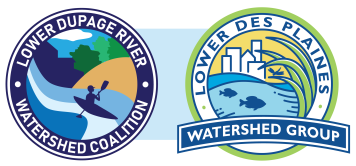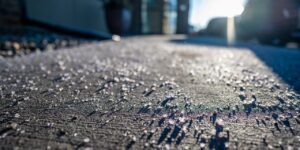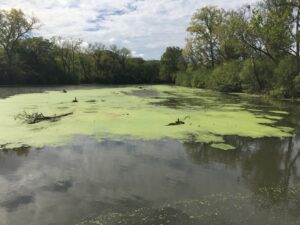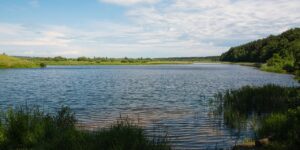What is Shoreline Erosion?
During inspections of your local stormwater detention pond, you may notice signs of shoreline erosion. Common signs of a deteriorating shoreline can include:
- Loose soil around the shoreline
- Soil collapsing into the water causing murkiness
- Steep shoreline bank
Why is Shoreline Erosion a Problem?
When soil erosion occurs, the loose soil particles build a layer of sediment in the pond and make the water murky. Over time the extra layer of sediment in the pond can decrease the amount of stormwater that the pond can hold. Less stormwater storage in detention ponds increases the risk of flooding in your neighborhood and local waterways.
On the other hand, a well-functioning stormwater detention basin will properly regulate stormwater in your neighborhood. Inspecting the detention pond monthly and after any big storms can facilitate routine maintenance that will keep the pond in good condition.

What Causes Shoreline Erosion?
Stormwater detention ponds are built to collect and store stormwater to reduce flooding in local waterways and homes in your neighborhood. The size and capacity of the basins are driven by local ordinance and usually based on handling specific sized storms.
During these storms, stormwater run-off collects in the pond though inlet structures. During and after a storm, the continuous rise and fall of water levels in the pond causes ripples that can loosen the soil around shorelines.
There are some common factors that can lead to your stormwater pond being more susceptible to shoreline erosion:
Exposed Shoreline
An exposed and unprotected shoreline is especially vulnerable to erosion. Many detention ponds are planted with shallow-rooted, mowed grass to the shoreline. Water can easily erode a shoreline that lacks deep-rooted vegetation.
If you have an exposed shoreline, adding a native vegetation buffer with deep roots both in the shallow water and up onto the land will help to stabilize the soil. In some cases, rocks or rip-rap are used to stabilize the shoreline. This tends to be a short-lived fix as the water gets behind the rocks and erodes the soil causing the rocks to fall into the pond.


Shoreline Structure
The slope of the shoreline can be an important factor that contributes to shoreline erosion. If the bank slope is too steep, the rate of erosion will be quicker. This is partly due to gravity and partly because the energy or force of the movement of water is concentrated at the vertical surface. A shallow slope, including a planting shelf in the water, is easier to plant and maintain and helps to relieve erosive energy from the movement of water.


Professional assistance may be needed if your shoreline has severe erosion problems.
Other Issues Caused by Soil Erosion
Nutrients, like phosphorus, attach to soil particles. When that soil is eroded off of the bank and falls into the water, it adds to the nutrient load of the basin. These excess nutrients encourage algae growth, turning the water green. While many people consider algae blooms unattractive, algae affects more than just aesthetics.
Abundant algae throws the pond ecosystem off balance, especially when the algae bloom dies off. Decomposing algae uses up available oxygen, potentially killing off fish that live in the pond. The decomposition process also reintroduces nutrients to the water, which can start the algae bloom cycle all over again.
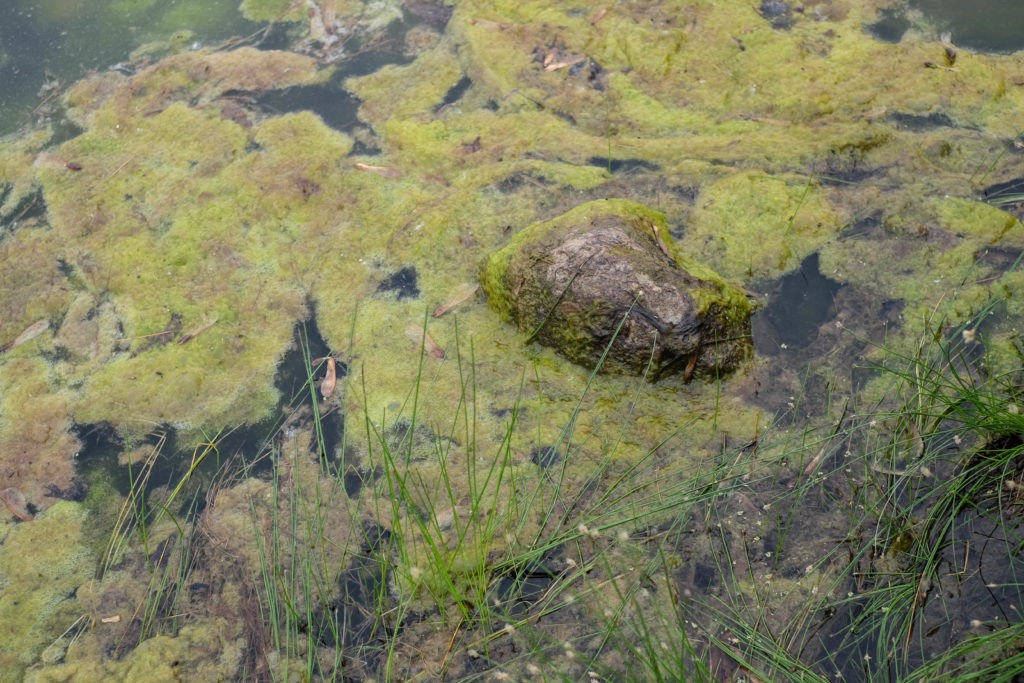

Stop the cycle by preventing outside sources of nutrients from entering the detention basin and stabilizing the shoreline with deep-rooted native plants can be a great place to start.
